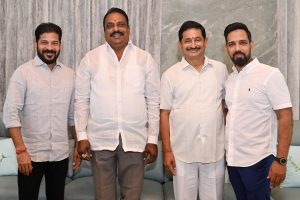This book is located at the intersection between two great arcs of scholarly work in the West and India in modern times. On the one hand, there is the arc of the course of scholarly research originating from within the discourse of Sanskritic studiesSanskritic studies. And on the other, there is the trajectory outside of it in the works of social scientists engaged in situating the discourse of Oriental studies in the West in the broader context of the encounter between the East and the West, imperial power in relation to knowledge enterprises it generated. If you shake the bibliography tree, names of the eminent will drop like mango in the orchard, names ranging from Max Muller in Germany and England to Sheldon Pollock in the US in one tradition of scholarship, and on the other hand names like Edward Said or Bernard S Cohn. At the conjuncture of these two lines of scholarly investigation has developed a new area of research where re-thinking about the encounter between Europe and ancient Sanskritic culture has been forged. This book focuses attention on that, with particular attention to a crucially important text, the Rigveda. That is the way the reviewer looks at the book. What is the agenda of the book as seen by the author, Sati Chatterjee, formerly professor at the Department of English at Jadavpur University? “Are we right in accepting the guidance of the nineteenth century Western Indologists? Does the Rigveda indeed record, as Max Muller assured us, the infancy that the adult civilized West had long left behind and lost sight of, the infancy that India in her cultural stagnation had preserved and in the miasma of
If you shake the bibliography tree, names of the eminent will drop like mango in the orchard, names ranging from Max Muller in Germany and England to Sheldon Pollock in the US in one tradition of scholarship, and on the other hand names like Edward Said or Bernard S Cohn. At the conjuncture of these two lines of scholarly investigation has developed a new area of research where re-thinking about the encounter between Europe and ancient Sanskritic culture has been forged. This book focuses attention on that, with particular attention to a crucially important text, the Rigveda. That is the way the reviewer looks at the book. What is the agenda of the book as seen by the author, Sati Chatterjee, formerly
That is the way the reviewer looks at the book. What is the agenda of the book as seen by the author, Sati Chatterjee, formerly professor at the Department of English at Jadavpur University? “Are we right in accepting the guidance of the nineteenth century Western Indologists? Does the Rigveda indeed record, as Max Muller assured us, the infancy that the adult civilized West had long left behind and lost sight of, the infancy that India in her cultural stagnation had preserved and in the miasma of culturalintellectual retardation, continued to cling to even in the heyday of ‘progress’ in the mid- nineteenth century (sic)?” (p 3). That suggests one kind of enquiry in this book. The other more general set of questions is
Advertisement
The other more general set of questions is posited as follows, “Must the remote past be threaded to the present in a single sequential order? Is the logic of the grand narrative compulsive? Might not the story of man, instead, be viewed as a spectacle of multiple growthlines in different parts of the planet, reaching distinct peaks along divergent tracks at different points of time, meeting different destinies — of decline or death, of attenuated or vibrant continuity? Questions like these started the present enquiry.” (p 3) How does the author execute this plan of enquiry? The book is structured on the following lines. In the first chapter the tradition of oriental scholarship in the days of the East India Company is outlined. This is where the author touches upon the alliance between imperial interest and cognitive explorations. In the second chapter the inheritors of that tradition, the 19th century intellectuals like Max Muller, are in focus. In the next, entitled “Contrary Pulls”, the author draws our attention to the dissonance between the notions of the colonised and the colonisers. She questions the viability of the unilinear vision of progress prevalent in the West, the progress from “infancy” of human civilisations
How does the author execute this plan of enquiry? The book is structured on the following lines. In the first chapter the tradition of oriental scholarship in the days of the East India Company is outlined. This is where the author touches upon the alliance between imperial interest and cognitive explorations. In the second chapter the inheritors of that tradition, the 19th century intellectuals like Max Muller, are in focus. In the next, entitled “Contrary Pulls”, the author draws our attention to the dissonance between the notions of the colonised and the colonisers. She questions the viability of the unilinear vision of progress prevalent in the West, the progress from “infancy” of human civilisations in the stage of the Rigveda to the complex Western civilisation of the 19th century world. There follows a critically important chapter in the book, entitled “The idiom of yore and Sayana, the guide”.This chapter contains the author’s critique of the European scholars’ acceptance of Sayana’s 14th century commentary, which deliberately excluded the symbolical interpretations of the Rigveda. Chatterjee questions the choice that Max Muller and many other European scholars made in selecting Sayana’s interpretation of the Rigveda as the best native one. Chatterjee rejects that view since Sayana’s interpretations leaned towards the priestly emphasis on the ritualistic aspect of the text to the detriment of the symbolical aspect. The latter point was made by Sri Aurobindo in his critique of Max Muller. That is taken up again by Chatterjee in the fourth chapter, which is devoted to three Indian critics of Western studies of the Vedas — Bankim Chandra Chatterjee, Bal Gangadhar Tilak and Sri Aurobindo. Among them Tilak addressed only the issue of dating the text, and Bankim the very general question of the quality of Vedic scholarship in the West, but Sri Aurobindo’s critique is of greater importance. He questioned, inter alia, the theory of “Aryan invasion” and in general the approach of the Western interpreters of Indian culture. In the last chapter Chatterjee returns to Max Muller’s corpus of writings and offers an insightful appreciation of his pioneering role in developing the methodology of comparative religious studies. On the whole, in these six chapters the author covers some major themes, which recur time and again in the area of Vedic studies. Perhaps there are some points in the author’s wide-ranging exposition which wanted more consideration and extended discussion. For instance, the complete dismissal of the theory of migration of a people who spoke the “Aryan” language may be premature in historiography. Chatterjee is right that some interpretations of recent archaeological explorations and some archaeologists’ writings do not support the old theory of “Aryan invasion”. However, the historians of that new school may not have finally established beyond doubt the identification of those sites of settlement as part of Aryan heritage and likewise the new speculations about the age of that civilisation need more evidence. While this is an area of historiography that is still under construction, we cannot question one proposition —a civilisation need not be geographically indigenous, or incredibly ancient, to be worthy of reverence or appreciation. The civilisation in question has better claims to recognition than that. Another instance which might have merited more discussion by the learned author is the consistency between the argument that “insiders” in a culture enjoy a decisive advantage over those who do not belong to the culture. Chatterjee appreciates and emphasises the fact that Bankim Chatterjee identified a “difference between the outsiders’ reading of alien cultural texts on the one hand, and participatory reading by the insider on the other.” (p 169). At the same time, elsewhere in this work Chatterjee recommends the comparative method (p107), comparative mythology (p 19), and comparative religion (p 44). The question to ponder is whether the ethnic “outsider”, thus constrained by the fact of being so, can effectively take part in comparative studies, which necessarily involve study of other cultures? Further, did Bankim mean to question some foreign scholars’ reasoning in interpreting Indian texts just because they were foreign or because he doubted their reasoning? How will comparative study be viable if being “insiders” is a criterion of competence? It would have been interesting if such questions were addressed by the author. However, these are minor issues in an excellent survey and evaluation of the culture of Indological research in 19th and early 20th century Europe and India. Further, in this book there is an unexpected bonus in the form of a beautiful translation of the Nasadiya Sukta by AL Basham, “Then even nothingness was not, nor existence…” That piece of translation reveals how deep was the immersion of that historian of ancient India in the Indian civilisation. Another such bonus is a lucid and perspicacious essay in the Appendices of the book, an essay on the influence of contemporary historical context on the trend of interpretation of commentators like the
There follows a critically important chapter in the book, entitled “The idiom of yore and Sayana, the guide”.This chapter contains the author’s critique of the European scholars’ acceptance of Sayana’s 14th century commentary, which deliberately excluded the symbolical interpretations of the Rigveda. Chatterjee questions the choice that Max Muller and many other European scholars made in selecting Sayana’s interpretation of the Rigveda as the best native one. Chatterjee rejects that view since Sayana’s interpretations leaned towards the priestly emphasis on the ritualistic aspect of the text to the detriment of the symbolical aspect. The latter point was made by Sri Aurobindo in his critique of Max Muller. That is taken up again by Chatterjee in the fourth chapter, which is devoted to three Indian critics of Western studies of the Vedas — Bankim Chandra Chatterjee, Bal Gangadhar Tilak and Sri Aurobindo. Among
The latter point was made by Sri Aurobindo in his critique of Max Muller. That is taken up again by Chatterjee in the fourth chapter, which is devoted to three Indian critics of Western studies of the Vedas — Bankim Chandra Chatterjee, Bal Gangadhar Tilak and Sri Aurobindo. Among them Tilak addressed only the issue of dating the text, and Bankim the very general question of the quality of Vedic scholarship in the West, but Sri Aurobindo’s critique is of greater importance. He questioned, inter alia, the theory of “Aryan invasion” and in general the approach of the Western interpreters of Indian culture. In the last
In the last chapter Chatterjee returns to Max Muller’s corpus of writings and offers an insightful appreciation of his pioneering role in developing the methodology of comparative religious studies. On the whole, in these six chapters the author covers some major themes, which recur time and again in the area of Vedic studies. Perhaps there are some points in the author’s wide-ranging exposition which wanted more consideration and extended
Perhaps there are some points in the author’s wide-ranging exposition which wanted more consideration and extended discussion. For instance, the complete dismissal of the theory of migration of a people who spoke the “Aryan” language may be premature in historiography. Chatterjee is right that some interpretations of recent archaeological explorations and some archaeologists’ writings do not support the old theory of “Aryan invasion”. However, the historians of that new school may not have finally established beyond doubt the identification of those sites of settlement as part of Aryan heritage and likewise the new speculations about the age of that civilisation need more evidence. While this is an area of historiography that is still under construction, we cannot question one proposition —a
While this is an area of historiography that is still under construction, we cannot question one proposition —a civilisation need not be geographically indigenous, or incredibly ancient, to be worthy of reverence or appreciation. The civilisation in question has better claims to recognition than that. Another instance which might have merited more discussion by the learned author is the consistency between the argument that “insiders” in a culture enjoy a decisive advantage over those who do not belong to the culture. Chatterjee appreciates and
Another instance which might have merited more discussion by the learned author is the consistency between the argument that “insiders” in a culture enjoy a decisive advantage over those who do not belong to the culture. Chatterjee appreciates and emphasises the fact that Bankim Chatterjee identified a “difference between the outsiders’ reading of alien cultural texts on the one hand, and participatory reading by the insider on the other.” (p 169). At the same time, elsewhere in this work Chatterjee recommends the comparative method (p107), comparative mythology (p 19), and comparative religion (p 44). The question to ponder is whether the ethnic “outsider”, thus constrained by the fact of being so, can effectively take part in comparative studies, which necessarily involve study of other cultures? Further, did Bankim mean to question some foreign scholars’ reasoning in interpreting Indian texts just because they were foreign or because he doubted their reasoning? How will comparative study be viable if being “insiders” is a criterion of competence? It would have been interesting if such questions were addressed by the author. However, these are minor issues in an excellent survey and evaluation of the culture of Indological research in 19th and early 20th century Europe and India. Further, in this book there is an unexpected bonus in the form of a beautiful translation of the Nasadiya Sukta by AL Basham, “Then even nothingness was not, nor existence…” That piece of translation reveals how deep was the immersion of that historian of ancient India in the Indian
However, these are minor issues in an excellent survey and evaluation of the culture of Indological research in 19th and early 20th century Europe and India. Further, in this book there is an unexpected bonus in the form of a beautiful translation of the Nasadiya Sukta by AL Basham, “Then even nothingness was not, nor existence…” That piece of translation reveals how deep was the immersion of that historian of ancient India in the Indian civilisation. Another such bonus is a lucid and perspicacious essay in the Appendices of the book, an essay on the influence of contemporary historical context on the trend of interpretation of commentators like the orthodox scholar Madhavacharya and the liberal law maker Parashara. The latter was the source of the dictum Ishwar Chandra Vidyasagar used in defence of widow remarriage, nashte mrite pravarjite… . To conclude, on the whole, the author’s research raises many questions and brings to readers new insights into the East-West cultural encounter in the interpretation of the Rigveda and more generally the discourse of Indian civilisation.
To conclude, on the whole, the author’s research raises many questions and brings to readers new insights into the East-West cultural encounter in the interpretation of the Rigveda and more generally the discourse of Indian civilisation.
The reviewer is former professor of history at Jawaharlal Nehru University, ViceChancellor of Visva-Bharati and Chairman of ICHR. He is the author of Talking Back: The Idea of Civilization in the Indian Nationalist Discourse (Oxford University Press, 2011)
Advertisement











